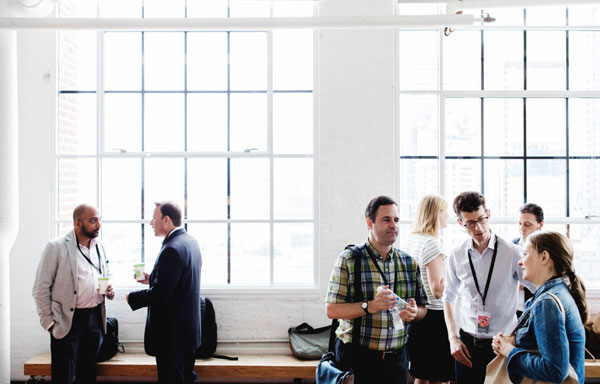The organizational impact of design research
On a recent fall evening in September, professionals from Barcelona to San Francisco joined the Smart Design team in New York for the inaugural Virtual Smart Salon, a series of conversations with diverse leaders on today’s most important design-related issues.
The evening’s topic—Engaging the Organization—came from interviews with researchers, designers, and business stakeholders who helped us identify trends in design research. Our panel of three experts each came equipped with a different perspective on what it’s like to work in today’s design research arena, and how they’ve learned to focus their practice to make their work more actionable.
Watch the entire session featuring (clockwise from the left) Smart Design hosts Richard Whitehall and Leah Cabrera-Fischer with Etienne Fang, Raj Kottamasu, and Rachel Wong.

Virtual and in-person events
Join us for our upcoming events
Our Panelists
Etienne Fang, currently a Principal Researcher at Amazon, and has previously led research teams at Uber, shared her experience working in tech where the constant need to update products and services requires the availability of on-demand insights from across the organization.
Raj Kottamasu, an embedded Design Strategist at Memorial Sloan Kettering Cancer Hospital, described how he works closely with a complex network of non-designer stakeholders to ensure design adds day-to-day value within the hospital context.
Rachel Wong, founder of strategy firm How We Meet, shared her experience making audio stories as an antidote to presentations that collect dust while the valuable insights inside go to waste.
Here are some takeaways from the event
Researchers are building tools to surface insights from across the organization
What if insights didn’t need to come from the research team, but could come from anyone in the organization? Design researchers are creating systems to democratize insights so they can be sourced from any team or person. At a minimum, this increases productivity and makes processes more efficient. But even more interesting, is the design researcher whose role shifts to pollinator of cross-team collaborations by making connections between those working with similar topics or users.
“Our objective [at Uber] was really to increase the impact of insights across the organization” Etienne Fang lent us her experience, “Insights can come from any part of the organization. So whether you’re a senior researcher at HQ, or you’re a junior operations person in a far-flung city, all of these insights can come together and help us understand the full picture. The way we did that was by developing an insights database tool as well as processes, and establishing partnerships.”
Better stories mean knowledge can reach further
Organizations are naturally siloed, spreading knowledge to all who can act on it is a well-known business challenge. To craft narratives that they know will resonate, design researchers are utilizing their skills to dig into and understand company culture and communication styles. Taking on the dual role of researcher-slash-storyteller means embracing new mediums and being inspired by the way stories are told in the broader media landscape. When there is an entertainment aspect to how researchers share insights, the work is more likely to be shared and the medium becomes more effective at increasing impact.
“I find it super important to understand the way that different organizations communicate internally and to be able to formulate my insights in a way that makes sense for the culture,” advised Rachel Wong, “Learn early on what types of deliverables make sense for how organizations communicate, and then just react accordingly. Sometimes even doing things a little bit different than what they usually do intentionally, if it makes sense to get to elicit a certain reaction.”
Researchers showcase value by embedding with cross-functional teams
Today, we’re seeing departments and interdisciplinary teams that wouldn’t normally employ design researchers benefitting from—and amplifying the importance of—the value their skillsets bring. By weaving research-driven thinking into how everyday challenges are approached, organizations are actively—yet not invasively—training future leaders to value the advantage design research brings to the table.
“One of the reasons that my role was created,” mentions Raj Kottamasu, Embedded Design Strategist at Memorial Sloan Kettering Cancer Center, “was to be able to build capacity within our staff to take on innovation with small challenges, things that they were encountering in their day-to-day.”
“There’s enough critical mass and more and more organizations that they’re able to embed researchers across lots of interdisciplinary teams. And that’s pretty cool.” agrees Wong, “Because as an effect, you can work in a more collaborative way. It’s no longer this over-the-fence model for working together.”
Contributors
Jamie Munger, Strategy director
Yodai Yasunaga, Visual designer